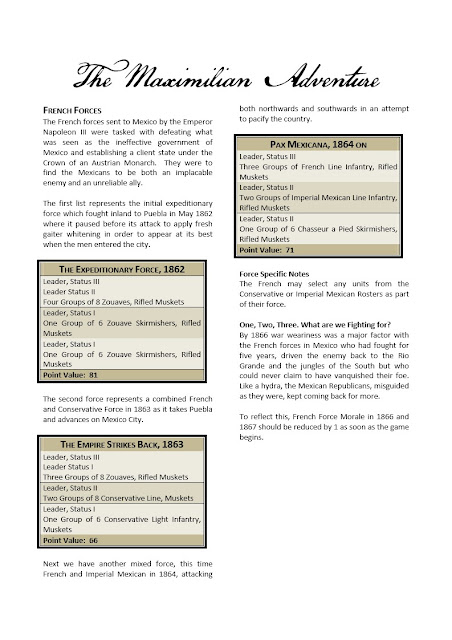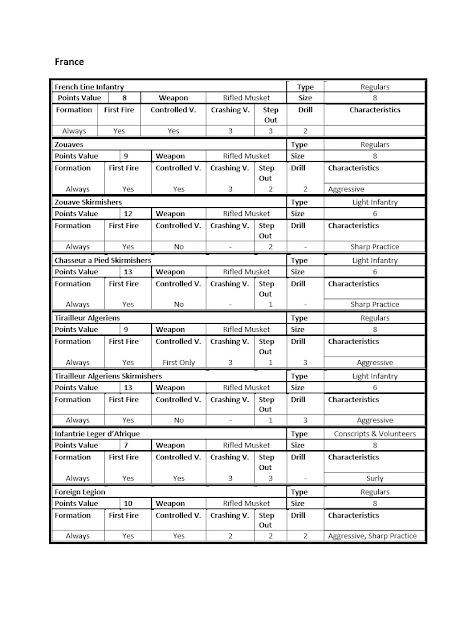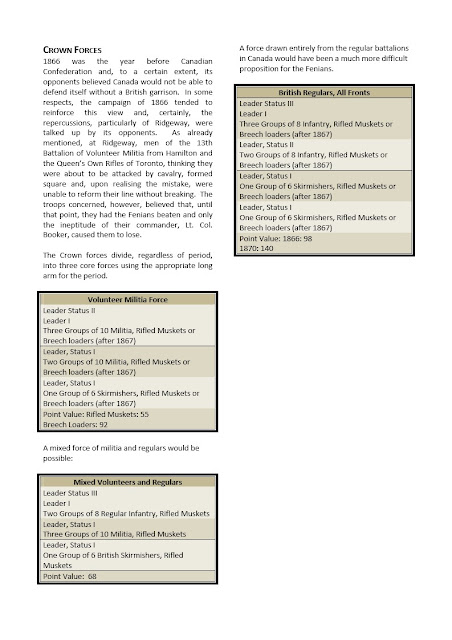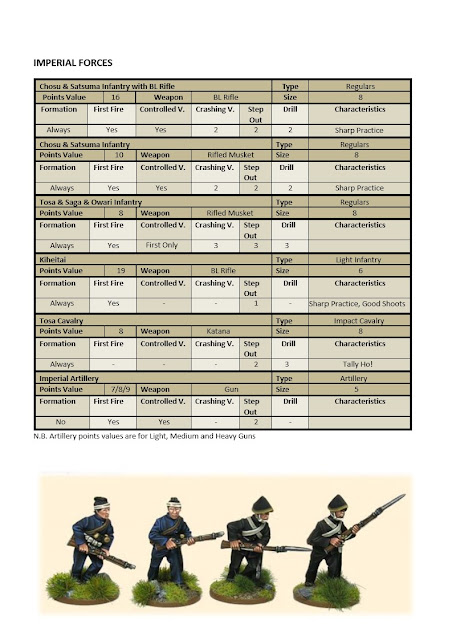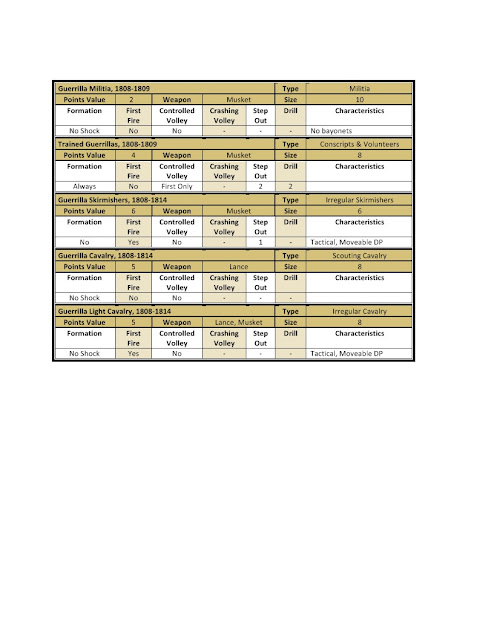This is the last of the Sharp Practice Army lists. As no more have been created by the Two Fat Lardies. Hope this will help you create the armies of your choice.
15mm, 20mm and 28mm miniature. Modeling vehicles and aircraft 3d printing of building and miniatures
Yom Kippour War
- 0200 hrs
- 3 d printing fixes and tips
- 3d printing
- 3d printing fixes and tips
- 40k
- a
- Advance Squad Leader
- Advance Squad Leader & Squad Leader
- aircraft
- Analogue Challenge
- Aussie in Vietnam
- Aussies in Vietnam
- Australians in Vietnam
- Barkskins French and Indian wars
- Baron's War
- Battle of the Bulge
- Battletech
- Blog reviews
- blood eagle
- Bolt Action
- British
- Bushido
- casting resin
- CDS IDF variant rules
- CFR formula f1 racing
- Chain of Command
- Civil war
- Close action Naval battles
- Cold War era
- colonial miniatures
- Cons
- crescent root
- cresent root
- Cry havoc
- CY6 air combat
- D&D
- Daisho
- dungeon saga
- DVG warfighter series
- Easy Eight battleground rules
- f
- Fat Dragon
- Fins
- For sale items
- french EE
- g
- German
- GMT Panzer
- GMT solo Uboat game series
- Grosse Pointe Library WW2 series
- Grosse Pointe Library WW2 series by David Lamb
- IDF
- Impetus
- In her Majesty Name
- IPMS
- Ironclads
- Italians
- japanese
- leipzig
- Lion Rampant
- Lock & Load
- Mack my Scottish terrier
- Mail surprises
- Men who would be kings
- Model companies.
- modeling tips
- Muskets & Tomahwaks
- my good friends
- napoleonic
- Neulandia
- Night fighter Ace
- Normandy
- old school tactical
- Operation Claymore.
- p
- Painting tips.
- pathfinder
- Perry Brothers
- Pike mans Lament
- Pike mans Lament/ ECW
- Plastic Soldier Company
- Romans
- russian
- Saga
- Samurai
- sea battles
- Sharp Practice
- Sharps Practice
- sherman tank
- Six Day war 1967
- Solatire games
- SpecOps
- SPQR.
- Star Trek
- Star Wars
- Star Wars legion
- sword point rules
- ta
- tank charts
- USA
- valor & Victory
- Vassal
- Vietnam
- Vikings
- VSF
- weapons
- WW2
- WW2. Zevzda
- X-wing
- Y
- Yom Kippour
Monday, February 21, 2022
Sunday, February 20, 2022
American Civil Was unit organization example.
Many of us have played battles of the American Civil War. How many of us understood now the unit where organization for battle. This video does an excellent explanation of the unit organization for the battle of Gettysburg. Hope you will find this interesting.
Saturday, February 19, 2022
Is Army painter contrast paint better that Games Workshop
Here is te video. You decide, let me know in the comments. I think I help give them a try.
Thursday, February 17, 2022
Wednesday, February 16, 2022
Painting Warlord Epic Battle Britain Cavalry unit
The new Epic plastic miniature from warlords are a amazing. But being old they are hard on the yes to paint. Here is very well done video on painting these amazing new figues
Monday, February 14, 2022
Sharp Practice Army list = Fenian Raids
Fenian raids, series of abortive armed incursions conducted by the Fenians, an Irish-nationalist secret society, from the United States into British Canada in the late 19th century. The unrealized aim of the quixotic raids was to conquer Canada and exchange it with Great Britain for Irish independence. The name of the society derives from the Fianna Éireann, the legendary band of Irish warriors led by the fictional Finn MacCumhaill (MacCool). The society was founded in the United States by John O’Mahony and in Ireland by James Stephens (1858).
Early American movement
The Irish society suffered a blow in 1865 when Britain crushed the Ireland-based independence movement, scattering its leaders. That situation created bad feelings toward Britain among many American Civil War veterans of Irish heritage, and their membership in the Fenian movement quickly grew to about 10,000 men.
Chief among the Fenians’ goals was Irish independence, but they were divided on the question of how that could be achieved. Some advocated staging a massive uprising in Ireland, while others favoured cross-border military action against Canada.
Fenian targeting of Canada
British and Canadian officials took the threat posed by the Fenians seriously and directed that spies originally planted to monitor Confederate sympathizers in the northern United States shift their attention to the Fenians. In November 1865, a small number of militia were called out to garrison points in Canada West, or modern-day Ontario, including Sarnia, Windsor, Niagara, and Prescott.
By March 1866, it had become evident that the Fenians were going to act against Canada, resulting in the calling up of 10,000—later increased to 14,000—Canadian volunteers for active duty. Nothing happened immediately, however, and the volunteers were sent home. Then, in April, the Fenians staged a raid against Campobello Island in New Brunswick, achieving nothing other than the destruction of a few buildings.
In May 1866, further evidence revealed another potential attack against Canada. The Fenians had ambitious plans to strike at several points in Canada West and Canada East, or modern-day Quebec. Twenty-thousand Canadian volunteers were quickly mobilized, while 13 small steamboats were commandeered and, under the guidance of the Royal Navy, patrolled the Great Lakes and the St. Lawrence River. Fortunately for Canada, the Fenian plans fell apart, as fewer men than expected chose to join the forces concentrating at Chicago, Cleveland, Buffalo, and other locations. Fenian leaders were also unable to requisition the ships needed to transport their forces. American officials, uneasy about the invasion’s potential effect on Anglo-American relations, also intervened, arresting some of the would-be conquerors. With their plan in tatters, the remaining Fenians settled upon crossing the Niagara River from Buffalo to Fort Erie in Canada West.
Sharp Practice Army list = The Boshin war
he Boshin War was a civil war in Japan which was fought from 1868 to 1869 between forces loyal to the ruling Tokugawa Shogunate and to those loyal to Emperor Meiji. The influence of the Western imperial powers and merchants on Japan following the US Navy's opening of Japan to foreign trade in the 1854 Treaty of Peace and Amity resulted in a xenophobic backlash from powerful feudal lords (daimyo) and young samurai, and, in 1863, Emperor Komei signed the Order to Expel the Barbarians, leading to the nativist Sonno joi movement assassinating several Western merchants and advisors who were associated with the pro-Western Shogunate. While the Western powers responded with the Bombardment of Kagoshima and other naval campaigns against Japan, the Shogunate's heavy-handed response to the increasing power of the rebellious, pro-Imperial daimyos led to the pro-Imperial faction becoming closer to thTe foreign powers and modernizing its armies with the help of Britain; meanwhile, the Shogunate received advisory support from Britain's colonial rival, France. The sporadic clashes between the Imperial and Shogunate clans ultimately led to Shogun Tokugawa Yoshinobu's resignation in 1867 as a compromise between the factions; Emperor Meiji would be restored to power, while the Tokugawa clan would retain its privileges. However, a faction of pro-Imperial clans led by the Satsuma Domain and Choshu Domain refused to abide by this treaty, fearing that the Tokugawa would continue to dominate the Emperor, and they seized Kyoto on 3 January 1868. This resulted in the outbreak of a nationwide civil war between the Imperial and Shogunate forces which ultimately resulted in the Imperial faction overthrowing the Shogunate and crushing the last pro-Shogunate resistance in 1869 after crushing the Republic of Ezo. The Boshin War resulted in the end of the Shogunate era, the start of the Meiji Restoration era of the new Empire of Japan, and the start of Japan's rapid modernization into a Westernized superpower.
History
Sporadic conflict between the ruling Tokugawa Shogunate and reformist elements intent on restoring the emperor to power had dragged on for years. By September 1867, armies loyal to the bakufu (the Tokugawa's central administration) were hard pressed by reformist forces. To avoid civil war, the Tosa Domain proposed a compromise whereby the Shogun Tokugawa Yoshinobu would step down, but retain his privileges in a new parliament responsible to the emperor. Yoshinobu, seeing a chance to avert war while keeping de facto control, promptly resigned. Concerned that the Tokugawa would dominate the new parliament, the heads of the rebellious clans, Saigo Takamori of the Satsuma Domain and Kido Koin of the Choshu Domain, informed four other clans - the Owari, Echizen, Tosa Domain, and Hiroshima Domain - of their intention to seize the palace in Kyoto. Saigo's troops took the palace on 3 January 1868, and responsibility for the country's government reverted immediately to Emperor Meiji. Yoshinobu attacked Kyoto but, despite outnumbering the Satsuma and Choshu armies and support from French military advisers, his forces were routed in the first battle near Toba and fled to Edo (Tokyo).
During the weeks that followed, an ever-growing Imperial army advanced eastward, securing oaths of loyalty from local daimyo as they went. Faced with such opposition, Yoshinobu surrendered before a shot was fired. The seat of government was moved to Edo (now renamed Tokyo) and the Meiji era began. The Aizu Domain still resisted, however. Despite the mismatch between the Imperial Japanese Army's western-made arsenal and the Aizu's Japanese blades, it took a month of fighting to suppress them, ending with the mass suicide of the Aizu's elite warriors. The final resistance was ended in May 1869 when the self-declared Republic of Ezo, set up on Hokkaido by a former bakufu official, was crushed by Meiji forces.
Saturday, February 12, 2022
Sharp Practice Army list = United States-Mexican War
An interesting period. Many of the future American Civil War General and Officers learned their trade during this conflict.













